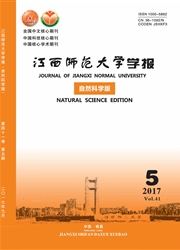

 中文摘要:
中文摘要:
以鄱阳湖流域4个支流共6个地点(信江XS1、信江下水湾XS3、饶河RS、饶河内湖RHS、修水SS、赣江GS)的底泥样品为研究对象,利用16 S rRNA基因扩增技术探究底泥微生物对环境变量的响应.结果显示:6个采样点的底泥样品的微生物群落结构大致分为4类;底泥的p H值、TOC、TN、TP和重金属含量对微生物群落结构及微生物多样性存在着显著的影响.4条河流底泥微生物多样性指数顺序为赣江〉信江〉修水〉饶河,同时发现饶河的Cu、Zn含量在4条河流中最高,这说明高Cu、Zn会对微生物多样性产生负面的影响;河流与其所对应湖区底泥样品中微生物多样性指数比较发现:饶河〉饶河内湖,信江下水湾〉信江,这种结果顺序的不一致主要是由底泥中营养物质含量不同和某些重金属元素胁迫导致的.
 英文摘要:
英文摘要:
Based on six sites in different tributaries of Poyang lake basin sediment samples,this study makes an attempt to investigate sediment microbial response to environment variablesthe through 16S rRNA gene amplifcafion technique was used to study the microbial community and diversity in different sediment samples. Results showed that 6 samples ( Xinjiang XS1, Xinjiang water bay XS3, Raohe RS, Raohe lake RHS, Xiushui SS, Ganjiang GS) of sediment can be divided into four categories. Analysis found that pH and TOC, TN, TP, heavy metal content of the sediment exists significant influence on microbial community structure and microbial diversity, which causes the difference of the microbial community structure and diversity Further analysis shows that the microbial diversity index of four rivers sediment, Ganjiang 〉 Xinjiang 〉 Xiushui 〉 Raohe, addition, Cu and Zn content of Raohe is the highest in the four rivers, illustrates the rises with the content of Cu and Zn increasing, which would have a negative impact on microbial diversity;the difference of microbial diversity index between different river and its corresponding lake sediment samples, Raohe 〉 Raohe lake, Xinjiang water bay 〉 Xinjiang, the difference is mainly casued by the difference content of nutrient in the sediment and some heavy metals stress.
 同期刊论文项目
同期刊论文项目
 同项目期刊论文
同项目期刊论文
 期刊信息
期刊信息
